Hospitality Consulting
Hospitality and the Cannsult Value Proposition

Cannsult understands Hospitality
The past few years have triggered a transformation within the hospitality industry, which translates to massive
opportunities to improve and keep up with the changes. Many businesses didn’t survive, others adapted swiftly, and some were created out of the chaos with innovative solutions tailored to the new environment. Technology has been rapidly evolving, and the hospitality industry has the opportunity to embrace and adopt new technology to better serve customers and create healthier organizations.
Travel is once again a high priority for most people, but one thing is for sure, hospitality businesses must be agile and ready to skillfully solve problems and seize opportunities to keep up with the latest industry trends. It’s never been more important for teams to understand how to streamline costs and maximize profitability so that the industry can continue to thrive.
most significant changes and trends in the hospitality industry
Some of the most significant changes and trends in the hospitality industry are:
Customer Expectations
Customers’ expectations and preferences continue to evolve rapidly. They seek personalized experiences, contactless services, sustainable practices, and digital connectivity. Meeting these expectations while maintaining profitability can be extremely challenging.
Workforce Management
Finding and retaining skilled employees can be a challenge in any industry, but is even more challenging in hospitality. High turnover rates, labor shortages, and the need for specialized skills can make it difficult to maintain a qualified and motivated workforce.
Technology Integration
The integration of technology into various aspects of the hospitality industry (think online bookings, mobile check-ins, and digital guest experiences) presents both opportunities and challenges. Adopting and implementing technology effectively requires investment, problem-solving and project management skills and overall staying on top of the latest advancements.
Sustainability and Environmental Concerns
The hospitality industry is under increasing pressure to adopt sustainable practices and reduce its environmental impact. Balancing profitability with sustainability goals, and managing waste, energy consumption, and water usage, are ongoing challenges.
Competitive Landscape
The hospitality industry is extremely competitive, with new players entering the market and existing ones constantly evolving. Staying ahead of the competition, differentiating the brand, and attracting customers in a crowded market present significant challenges.
Geopolitical Considerations
Geopolitical events, such as political instability, terrorism, trade disputes, and changes in visa policies, can significantly impact the hospitality industry. These factors can influence travel patterns, tourism flows, and the overall business environment.
Regulatory Compliance
Compliance with local, national, and international regulations is critical. Keeping up with the changing laws related to safety, health, employment, data privacy, and accessibility requires ongoing efforts, skills, and resources.
Understanding the impact of Technology and AI on Hospitality
The impact of technology and artificial intelligence (AI) on the hospitality industry has been significant and continues to evolve. Here are some ways in which technology and AI have influenced the hospitality industry:
Enhanced Guest Experiences
Technology has allowed hotels and restaurants to provide personalized experiences to guests. AI-powered chatbots and virtual assistants can handle customer inquiries and provide 24/7 support, improving response times and guest satisfaction. Technology also enables guests to check in online, access their rooms with mobile keys, and customize their preferences, creating a seamless and convenient experience.
Efficient Operations
Technology has streamlined various operational aspects within the hospitality industry. For example, property management systems (PMS) help automate tasks like reservations, inventory management, and billing, which reduces human error and increases efficiency. AI algorithms can analyze large amounts of data to optimize pricing strategies and improve revenue management. Additionally, automated systems can handle housekeeping and maintenance tasks, freeing up staff to focus on guest service.
Smart Rooms and IoT Integration
The Internet of Things (IoT) has enabled the concept of smart rooms. Guests can control lighting, temperature, and entertainment systems through voice commands or mobile apps. IoT devices can also track guest preferences and adjust the room environment accordingly, which provides a unique experience based on the guest preferences Integration of IoT devices throughout a hotel’s infrastructure allows for efficient energy management, predictive maintenance, and enhanced security.
Data-Driven Decision-Making
Technology and AI provide hospitality businesses with access to vast amounts of data. This data can be analyzed to gain insights into guest preferences and behavior patterns. Utilizing this information, hotels and restaurants can make decisions related to marketing strategies, menu planning, pricing, and operational improvements. AI algorithms can even predict future demand, optimizing inventory levels and staffing requirements.
Enhanced Safety and Security
Technology has contributed to improved safety and security measures in the hospitality industry. AI-powered surveillance systems can monitor public areas and identify potential security threats or unusual activities. Biometric systems such as facial recognition or fingerprint scanning can enhance access control and prevent unauthorized entry. Additionally, contactless payment options and digital transaction platforms have become more prevalent, reducing the need for physical cash transactions, and minimizing security risks.
Streamlined Marketing and Communications
Technology has transformed marketing and communications. Social media platforms, online travel agencies (OTAs), and review websites provide opportunities for hotels and restaurants to engage with customers, promote their offerings, and receive feedback. AI algorithms can analyze customer reviews and sentiments, helping businesses improve their products and services. Targeted marketing campaigns can be developed based on customer data, enhancing customer acquisition and loyalty.
How we work with you to improve your organization
01
Discovery and Planning
02
Prepare Leaders and Infrastructure
03
Implement Daily Problem-Solving
04
Root Cause Analysis Projects
Discovery and Planning
- Understand the organization. (Type of Manufacturing, Customer/Market, Company History, Org Structure)
- Understand your organizational goals.
- Understand current challenges and risks facing your organization.
- Meet the team and understand resource constraints.
- Prepare a high-level plan including scope, timeline, resources required, and expected ROI.
- Solidify Statement of Work.
Prepare Leaders and Infrastructure
- Understand current infrastructure to support improvements. (if any)
- Identify internal Continuous Improvement Lead(s).
- Meet with each Departmental or Business Unit Leader. (in scope)
- Perform an initial Assessment to identify opportunities and to be used as a baseline.
- For each Department/Business Unit:
- Create a high-level process map.
- Identify KPIs. (aligned with Organizational goals)
- Establish Visual Performance Management. (A graphical representation of KPIs)
- Perform a Gap/Opportunity Assessment.
- Prioritize Gaps and Opportunities.
- Provide training to leaders (Sponsors, Champions) who will be supporting the Improvement Teams. (2-day training)
- Provide stakeholder training; a high-level overview of the method, tools, and terminology to ensure organizational alignment. (2-hour training)
Implement Daily Problem-Solving
Select initial areas of focus, Departments, Functions, or Work Areas. Which may include core functions, Engineering, Supply Chain, Production, Quality, etc. And/or support functions, HR, Technology, Finance/Accounting, Legal, etc.
Prioritize and scope based on impact on organizational goals, logical sequence, and resource availability.
Select initial daily problem-solving teams.
Provide training for daily problem-solving teams. (5-day training)
Implement Daily Problem-Solving and Visual Performance Management in each selected area.
Identify issues to be escalated; issues that require a higher skill level to resolve. (E.g. cross-functional issues, high complexity, high risk, high cost, etc.)
Root Cause Analysis Projects
With Departmental Leaders, prioritize escalated issues based on impact, logical sequence, and resource availability.
Select initial Root Cause Analysis (Green Belt) teams.
Provide Green Belt Training (Root Cause Analysis project training) for selected team members; Projects launched during training. (8-day training)
Provide project direction and support throughout the project duration. (Estimate 3 to 4 months for each improvement project)
Provide direction and support through project closure.
Validate improvement results and calculate ROI.

cannsult improvement examples (quick version): hospitality
- Developed an executable strategy for managing high transient volume.
- Increased cleanliness of Guest Rooms.
- Increased efficiency of the Arrival and Check-in process.
- Increased efficiency of the Departure and Check-out process.
- Reduced EPG (Evidence of Prior Guest) complaints.
- Decreased utility issues. (Heating and cooling)
- Improved staff interaction scores.
- Improved customer ratings of food and beverage.
- Reduced problem incident volume and improve Overall Experience scores.
Similarities between Hospitality and other industries
When creating a culture of Continuous Improvement, in some ways, Hospitality is no different from any other industry in that the same high-level steps apply.
Get our Lean6sigma Certification Online
via Hybrid Platforms
Our Comprehensive Training Programs are now available on iOS, Android, and a Web platforms.

Testimonials
How our Customers React?
Have a look at how Cannsult transform their Partners businesses and help them achieve their business Goals.
Darril Wilburn
Sr. Partner at Honsha.ORG
Greg Burns
President - Burns AssociatesPresident
Nicholas Kovacevich
Entrepreneur and Executive
Nigel Beeby
Process Engineer at MM Kembla
Kyle Stavig
CEO @ North Coast Container
Eliza G.
Specialty Raw Materials and Ingredients for Personal Care
Darril Wilburn
Sr. Partner at Honsha.ORG
Greg Burns
President - Burns AssociatesPresident
Nicholas Kovacevich
Entrepreneur and Executive
Nigel Beeby
Process Engineer at MM Kembla
Let's Connect
Thank you for your interest in Cannsult Inc. If you have any questions or want to know more about us, please send us a message.
- (561) 890-2235
- info@cannsult.org
- Melbourne, Florida, 32940, USA


